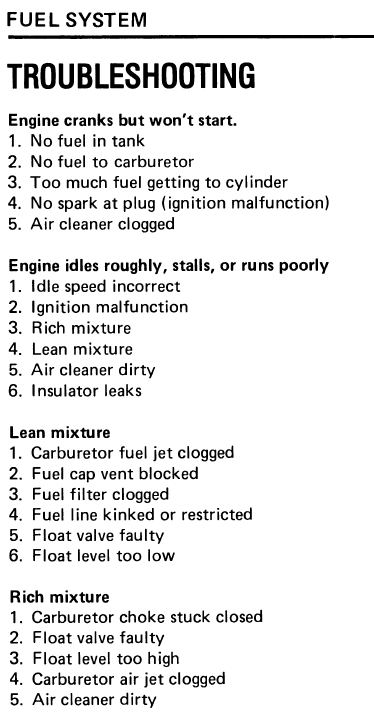Just to make sure, that's 150psi with a warmed up engine right? Also note the
service manual says to do full choke and hold the throttle full open. Not saying it's a weird number or anything, just want to make sure the process is right so the number is accurate.
Service manual I have has the same numbers you said, the 84 200es also has the same specs, so yea it sounds like you're engine is healthy compression wise (rings/valves) and also suggests the timing is good.
Good spark, and good compression, so the missing leg is correct amount of fuel.
Also if the needle and seat don't seal to stop the gas flow into the float bowl, it can cause a rich condition too. If you leave the gas on, does the carb ever leak gas? Float level too high would have similar effects, not sure if that carb has an adjustable float level though. I know those 200cc series carbs are a bit strange, I had a couple ATC200X's I got for
parts and the single carb that came with them would run fine on one engine, but not the other that had better compression and such. I ended up using a ATC185S carb on the better compression 200x engine and it ran pretty well till it's timing chain broke.
I can't really think of anything else except carb/fuel related on why the plug would be black. I guess it's still possible for the valves to leak oil down their valve guides and still seal well. Does the machine use a noticeable amount of oil at all? A trained nose should be able to tell the difference in the smell of the exhaust for burning oil vs rich on gas (both causes black smoke). Bring it up to Michigan and I'll give it a sniff lol.



 Reply With Quote
Reply With Quote

